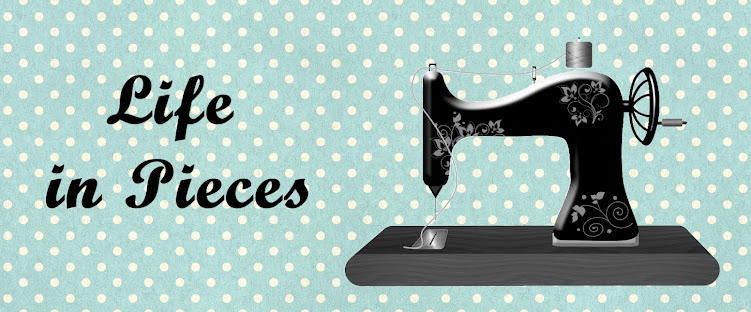Work Area Set Up:
I have two design walls, a large and a small one.
This picture is from 2013, so it's older, but it illustrates the point. There are four projects in progress. If the blocks are small they will stay up on the design wall, if the blocks are larger, just the ones I'm working on go up on the wall. That helps me see where I'm at in the construction process on multiple projects.
Projects in Progress Organization:
Having a place for the projects in progress and the fabric in use makes it easy to find exactly what part I'm looking for.
All of my projects are in project boxes. The blocks and or block pieces for a project are either up on a design wall or in a project box. It keeps my sewing space uncluttered and I can usually find exactly what I'm looking for. The other trick that's been a life saver is how my fabrics are folded and stored. The third shelf down are all the fabrics that are being used for the projects in the boxes. I fold my fabrics much like they are on a bolt. I can unfold part of the yardage, give it a touch up press and then cut whatever pieces I need. Since cutting isn't my favorite step, I tend to cut as I go, so there are less loose pieces for me to keep up with.
Assembly Line Construction:
I learned about chain piecing in my first quilt class. Not sure I can sew any other way now. The big challenge has been where to store all the different block pieces for different projects so I can easily get to them as I'm lining up the various pieces to sew. A recent addition to the sewing room seems to have solved that.
I ordered this 5 drawer unit from Pottery Barn Teen when it was on sale earlier this year. Each drawer has parts and pieces for the various projects in the work. The top drawer as the pieces for this year's Rainbow Scrap Challenge blocks, the next has pieces for En Provence, the current leaders and enders project. Another drawer have the pieces for the Christmas Angels quilt which is my current third project.
When I sit down to sew, I start lining up the blocks.
From left to right is the binding for the Meadow Mist Mystery quilt, the RSC block, HSTs for the Angel quilt, sashing for En Provence and then En Provence block that I'm using as my lender and ender at the moment. Yes, I could have done more than 2 of the HSTs for the Angel quilt, but I tend to make those in small sets so I'm not at the cutting table cutting them all at once. That's one of the cutting chores I really dread. Sprinkling those dreaded HSTs in with a set of other blocks keeps me moving that project along. Is it fast? No. But I'm able to keep the project moving and it doesn't end up forever on the UFO list because of a step that is hard for me to power through.
Method to the Madness:
When I started making quilts again, I had a two year old at home and a full time job that involved a lot of over time. My sewing time was really, really limited. Very often 15 minutes of sewing time was all I could eek out on a regular basis. But I found a process that allowed me to make the most of that time. This is my work process:
1. Cut whatever pieces are needed
2. Pin the pieces at the sewing machine
3. Chain sew what's sitting at the machine
4. Press all the seams
5. Repeat
With my 15 minutes one night, I'll cut what's needed for the next step. The following night I'll use the time to pin all the pieces and maybe sew a few together. The next night finishing stitching and press. It's not a lot at any one sitting, but if I manage 15 minutes every night, there's a good deal of progress in a week.
Recently I've learned that picking one project as the focus for the time period really helps with getting to a finish. The One Monthly Goal has really helped with that. So if it's just 15 minutes, that's the project where the time gets spent.
Progress for the year using this approach:
4 Finishes
1 Binding in progress
1 Ready to send for quilting
1 UFO moved from pieces to finished blocks
1 Steady progress on En Provence
We are all different in how we work best, this seems to fit the rhythm of my life. What works or doesn't work in yours?


























